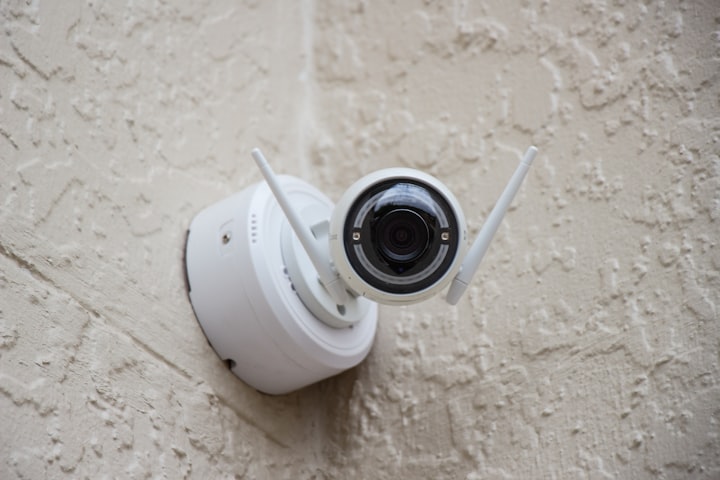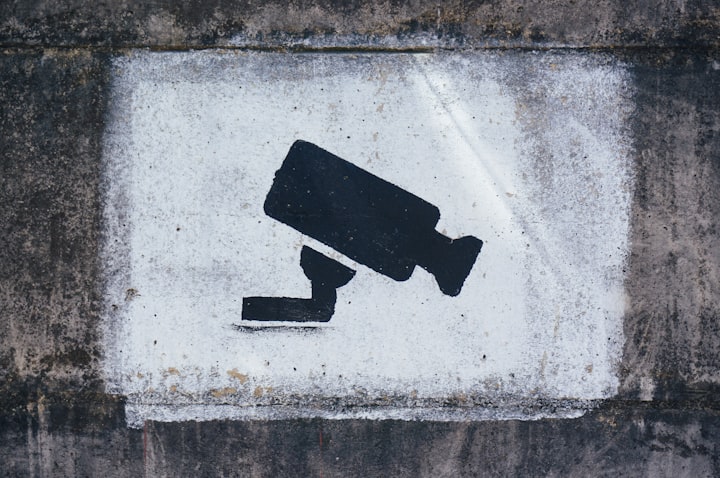15 Tips to Security Camera Placement
Today, we are going to discuss some tips that will help you place your security camera in order to maximize its effectiveness.

Security cameras are necessary for monitoring and protecting your property. It's critical to strategically set security cameras to ensure that they cover every inch of your property in order to enhance their usefulness. You can monitor your entire property at once if your cameras are properly situated. We've put up a list of the most crucial pointers to help you position your security cameras for maximum coverage.
1. Cover the Whole Perimeter: When installing outside security cameras, make sure they're on all sides of the structure. To ensure optimum visibility, you'll want to cover the full perimeter of your property with cameras placed at various angles. Installing cameras around the exterior of your building will provide 360-degree coverage, which is critical for effective monitoring.
2. Monitor Inside And Outside: Some people become so engrossed in installing internal cameras that they neglect to keep an eye on the outdoors as well. Outdoor cameras, on the other hand, are critical in preventing crime before it occurs; imagine them as the defence players on a soccer team. You've heard it said that the best attack is a good defence.
3. Monitor All Entrances: When installing your security cameras, be sure that one is pointed at each entry and exit. You should also keep an eye on both sides of these doorways, both outside and within your home. The best approach to keep track of who enters and departs your building is to monitor the entrances. Keeping track of these individuals will assist you in keeping your building secure and gathering evidence in the event of a break-in or other security violation.
4. Make Them Hard to Reach: Use difficult-to-reach spots when installing security cameras. To prevent manipulation, they should be placed high enough that they are out of reach. A burglar might try to spray paint the lenses, smash or remove your cameras, or cut the wiring to block feeds when attempting to enter your building. To keep your building safe, place your security cameras out of reach. This will prevent burglars or other lawbreakers from interfering with the cameras.
5. Use Outdoor Lighting: Although infrared cameras can provide excellent nighttime coverage, you can improve visibility by using outdoor illumination; this is especially true if your camera has a spotlight, as the night vision will be in colour. Check out Ring's options for economical outdoor lights, which are available on Amazon as well as their website.
6. Focus on High Traffic Areas: Many people concentrate on security cameras in solitary regions because they believe these areas are more dangerous. It's crucial to keep an eye on secluded regions, but you should also keep an eye on high-traffic areas. If there is a lot of activity in a particular area, you should install more cameras from other angles. Because of the confusion that high activity causes, it might be difficult to tell what is going on if an emergency or issue happens in a high traffic area. As a result, you should have a variety of cameras recording footage from various angles to provide the best visibility and knowledge of an incident in these regions.
7. Utilize Corners Indoors: Another simple technique to increase your camera's range of view is to use corners. The double whammy of placing cameras high up and in the corner is what you need to get the most out of your camera.
8. Test Cameras Before Mounting: This is a blunder we've made previously. Test your camera before mounting it to ensure that it is communicating properly with your mobile app. We recommend running a few motion tests to ensure that everything is working properly and with minimal lag.
9. Avoid Blind Spots: Blind spots exist in many homes, just like they do when driving. They're just a little more difficult to capture on camera. So don't dismiss your living room's oddly formed nook!
10. Router Placement: You should consider the location of your router in addition to the location of your actual security cameras. Place the router in a central area where all of the cameras will be able to receive the signal. When cameras are too far away from the network, they must work harder, which can quickly deplete their battery life. Make sure to put the router in a central area to avoid signal problems and early battery loss.
11. Get Professional Installation If Required: Most security cameras these days are self-installing, and they're designed to be up and operating in minutes for anyone. We had a little issue installing the majority of our home security cameras thanks to step-by-step instructions provided by the apps themselves. However, some providers, including ADT and Vivint, require expert installation. Professional installation is available from other firms such as SimpliSafe and abode, both through third-party providers.
12. Read Security Camera Placement Laws: You want to make sure that you are aware of the steps that must be taken when installing a CCTV camera, as well as the rules that must be followed.
13. Clean Outdoor Cameras: There's a lot that may collect on an outdoor camera's lens and make it difficult to view, from dirt to pollen. Clean it with a disinfectant wipe or spray on a regular basis to ensure that your film remains as clear as the video resolution.
14. Integrate Visible and Hidden Cameras: You should utilize both visible and covert cameras when installing security cameras. Visible security cameras are an effective deterrent to criminal conduct. People are less inclined to commit a crime when they notice security cameras because they know they are being watched. Visible cameras, on the other hand, are extremely sensitive to vandalism and damage. As a result, hidden cameras are necessary to ensure that you can continue to watch if your visible cameras are damaged. Both of these types of cameras can provide excellent surveillance, and the combination will dissuade potential burglars and keep your building safe.
15. Choose Wired or Wireless Cameras: If you're still looking for a security camera system for your house, you'll have to choose between wired and wireless security cameras. Almost every aspect of camera location is influenced by your decision. Coaxial or PoE (Power Over Ethernet) cables connect wired security cameras to a central hub. Cameras can be placed anyplace that the wires can reach, but they must be run through walls or in the ceiling. The feed from wireless security cameras is sent to the hub through wireless signals. Wireless cameras offer greater versatility because they do not require transmission lines. They do, however, require either electrical or battery power.
Resources:
1. https://www.security.org/security-cameras/legality/
2. https://www.cnet.com/home/security/where-to-place-home-security-cameras/
About the Creator
Techy Rishav
Blogger at TechSherlock.






Comments
There are no comments for this story
Be the first to respond and start the conversation.